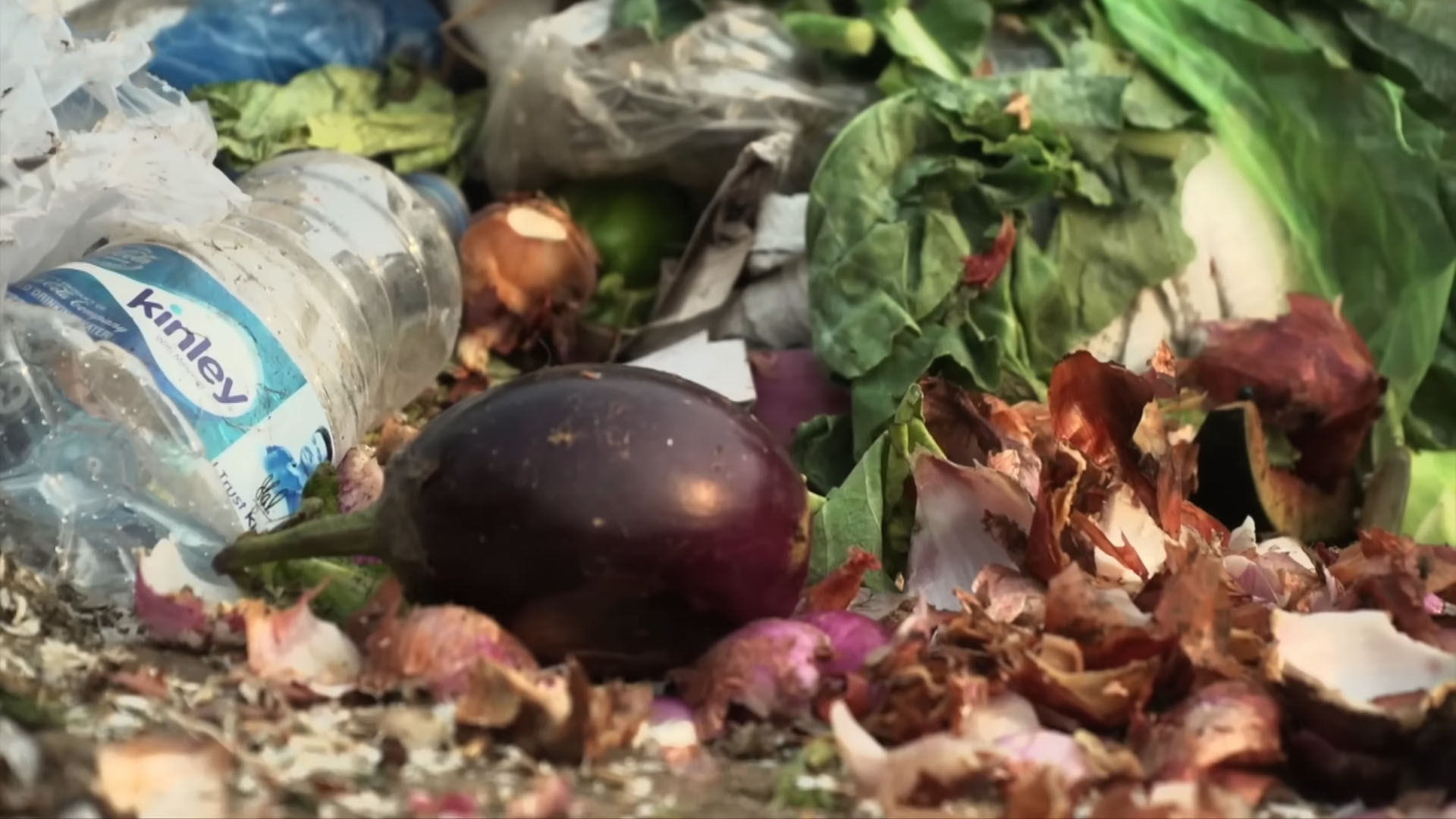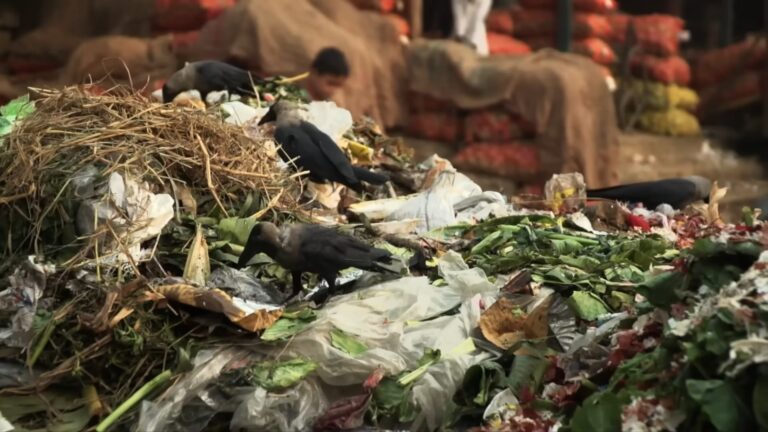India faces a food waste crisis of staggering proportions, with an estimated 40% of all food produced going uneaten each year.
This wastage spans households, markets, and food services, resulting in not only economic loss but also wasted resources and missed opportunities for feeding those in need.
Addressing food waste is critical for India, where millions still experience food insecurity despite sufficient food production.
To understand the issue completely, let us talk about India food waste.
Scale and Causes of Food Waste in India
India ranks among the highest globally in food waste, with nearly 40% of all food produced going to waste.
- Significant economic
- Social
- Environmental costs
A massive loss equates to billions of rupees and contributes to a severe waste of resources such as:
- Water
- Land
- Energy
#WorldFoodDay India wastes nearly 40% food, worth $14 billion, every year. A look at the food waste crisis in India with key numbers pic.twitter.com/oaGR6ukvcJ
— Forbes India (@ForbesIndia) October 16, 2020
The agriculture sector also feels the weight of this loss, as wasted food means wasted labor, land use, and inputs, which affects overall productivity.
Primary Causes
Let us see what are the main issues that contribute to a high percentage of wasted food.
Post-Harvest Losses
India’s food waste crisis begins right after harvest. Inefficient post-harvest practices mean a large portion of food spoils before it reaches consumers.
The loss stems from a lack of adequate storage facilities, where the absence of cold storage leads to rapid spoilage, particularly for perishable items like fruits and vegetables.
Moreover, India’s transportation infrastructure struggles to keep up with the demands of food distribution.
Outdated vehicles, inadequate refrigerated transport, and long travel times exacerbate spoilage, especially in rural areas far from major markets.
Poor handling practices, often due to inadequate training or resources, also contribute significantly to the degradation of food quality.
Cultural and Social Practices

Cultural practices in India also contribute to food waste, especially during large celebrations.
Weddings, festivals, and religious gatherings, often showcase an abundance of food as a symbol of prosperity and hospitality.
In these settings, food is served in excessive quantities, with leftovers frequently discarded rather than redistributed.
The stigma associated with taking leftover food from events home or redistributing it to those in need means that much of this food goes to waste.
Consumer Behavior and Awareness
Consumer habits and lack of awareness play a significant role in India’s food waste crisis. Many consumers remain unaware of how to properly store food or extend its shelf life.
For instance, they might lack knowledge about refrigeration needs or appropriate storage techniques for different food types.
There’s a prevalent tendency to buy food in bulk, often motivated by discounts or promotions.
While this bulk buying may seem cost-effective initially, it leads to excess food that often spoils before it can be consumed.
Market and Aesthetic Standards
In the Indian food market, aesthetic standards often determine whether food reaches consumers or ends up discarded.
Fruits and vegetables that don’t meet specific appearance criteria, such as uniform shape, size, or color, are frequently rejected by retailers.
Even though these items are entirely edible, the cosmetic imperfections render them unsellable in a market that values visual appeal over nutritional content.
Consequences of Food Waste in India
Food waste is a significant contributor to India’s environmental challenges, particularly in terms of greenhouse gas emissions.
When food waste decomposes in landfills, it releases methane, a greenhouse gas far more potent than carbon dioxide, which intensifies the effects of global warming.
Methane emission is substantial, given the sheer volume of wasted food, particularly in urban landfills where food waste often comprises a large portion of total waste.
According to the German Federal Ministry of Food and Agriculture, agriculture in India consumes around 80% of the country’s water resources.
Economic Costs
India’s staggering food wastage comes with an estimated economic loss of ₹92,000 crores each year.
The waste directly impacts the nation’s GDP and places a financial strain on the agricultural sector.
Resources that could have strengthened infrastructure, improved distribution networks, or supported welfare initiatives are instead lost to inefficiency and spoilage.
The financial burden of food waste is felt especially hard by small farmers and agricultural workers, as indicated in a lengthy report done by the Indian Ministry of Consumer Affairs.
Many of these farmers rely heavily on seasonal crops and do not have the means to absorb losses caused by waste. Their livelihoods suffer as they are forced to sell products at lower prices or discard unsellable food altogether.
Addressing food waste could transform these losses into potential gains for both individual farmers and the economy as a whole.
- Annual economic loss from food wastage: ₹92,000 crores
- Missed opportunities to invest in agricultural infrastructure and distribution systems
- Financial challenges for small farmers and agricultural workers
- Reduced income for farmers due to spoiled or unsellable produce
Socioeconomic Issues
Food insecurity persists in India despite sufficient food production, as high levels of waste prevent access to available food for millions.
Food that could nourish undernourished populations often goes to waste due to inadequate distribution and storage systems.
The problem is most pronounced with staple foods like grains and vegetables, which frequently spoil before reaching vulnerable communities.
For families in low-income areas, food waste directly translates to missed meals and increased hunger.
Without a stable food distribution network, rural and urban populations in need face restricted access to affordable, nutritious food, perpetuating cycles of poverty and malnutrition.
Bridging the gap between food production and food access is essential to reduce inequality and support the health and well-being of India’s population.
- Food insecurity affects millions despite abundant food production
- Staple foods such as grains and vegetables are frequently wasted
- Families in low-income areas struggle with consistent food access
- Inefficient distribution and storage systems worsen the gap between production and need
Efforts to Reduce Food Waste
The Indian government has introduced initiatives aimed at reducing food waste and loss. The Pradhan Mantri Kisan Sampada Yojana, for example, allocates funds for cold storage facilities and supply chain improvements to prevent post-harvest loss.
These facilities enable longer storage periods and more effective distribution, which can help prevent spoilage. The government collaborates with international organizations, such as the Food and Agriculture Organization (FAO), to reduce food loss across the agricultural supply chain.
Emerging Startups and Initiatives
The Indian government has recognized the pressing need to tackle food waste and has introduced several initiatives aimed at reducing food loss across the supply chain.
A key program, the Pradhan Mantri Kisan Sampada Yojana, allocates funds specifically for cold storage infrastructure and supply chain improvements, focusing on areas that experience high levels of post-harvest loss.
- Establish cold storage facilities across key agricultural regions, enabling farmers to store perishables longer and reduce spoilage.
- Improve supply chain efficiency by investing in infrastructure that minimizes transport delays and ensures quicker market delivery.
- Support farmers with better storage and distribution resources, helping them to maximize profits and reduce waste at the producer level.
Emerging Startups and Initiatives
In the private sector, startups are driving innovation to minimize food waste and create sustainable, economically beneficial solutions. Companies like Wastelink and GreenPod Labs are making significant strides:
Wastelink
Converts surplus and unsold food into animal feed, addressing waste at the retail and distribution levels.
By repurposing food that would otherwise go to waste, Wastelink contributes to a circular economy while providing an alternative use for discarded food.
GreenPod Labs
Develops innovative packaging solutions that naturally prolong the shelf life of fresh produce, reducing spoilage from farm to consumer.
Their plant-based packaging is designed to slow down the ripening process, making it ideal for fruits and vegetables prone to quick spoilage.
The Role of Stakeholders in Combating Food Waste

Effectively reducing food waste in India requires coordinated action among multiple stakeholders, each with a role in the food supply chain.
Here’s how key players can help combat food waste:
Producers and Distributors
Producers and distributors stand at the beginning of the food supply chain, making their role in waste reduction crucial.
Adopting efficient storage and inventory management practices helps prevent spoilage and excess stock.
Collaboration with NGOs and local distribution networks allows them to redirect surplus food to those in need rather than letting it go to waste.
- Implementing cold storage facilities and using temperature-controlled transportation reduces spoilage of perishable items.
- Better forecasting and inventory tracking allow producers to match supply more accurately with demand, reducing excess.
- Partnering with organizations that redistribute surplus food helps producers ensure food is given to those in need rather than wasted.
- Producers are now using digital platforms to sell surplus produce at discounted rates, preventing food from going unsold.
Retailers and Suppliers

Retailers and suppliers also play a vital role in food waste management.
With effective demand forecasting, they can prevent over-ordering, which leads to excess stock and eventual spoilage.
Retailers should consider markdowns or promotions for items close to expiration, which helps minimize waste and encourages responsible consumption.
- Advanced software can help retailers predict consumer demand more accurately, reducing the risk of overstocking
- Offering discounts on items nearing their expiration date helps them sell faster, reducing waste
- Unsold items that are still safe to consume can be donated to shelters or food banks, benefiting people in need
Consumers and Households
Households account for a significant portion of food waste, making mindful consumer behavior a vital part of any food waste reduction strategy.
- Creating a grocery list and sticking to it helps prevent impulse purchases that often lead to waste
- Planning meals allows households to use ingredients efficiently and avoid buying unnecessary items
- Food scraps that can’t be eaten can still serve a purpose by being composted and enriching soil
- Rather than discarding excess food, households can donate to local charities, especially during events with leftover food
Summary
Reducing food waste is essential for India’s sustainable future.
With joint efforts from the government, businesses, and citizens, India can make substantial strides toward minimizing food waste, ensuring food security, and achieving environmental sustainability.
Addressing food waste aligns with the United Nations’ Sustainable Development Goal (SDG) 12, encouraging responsible consumption and production.

